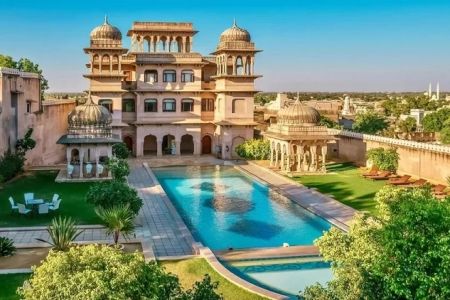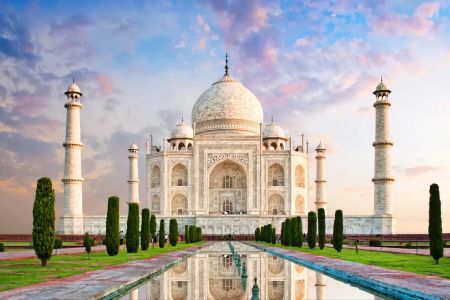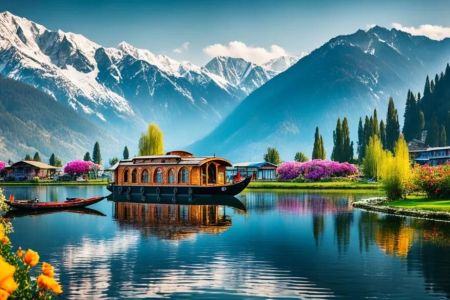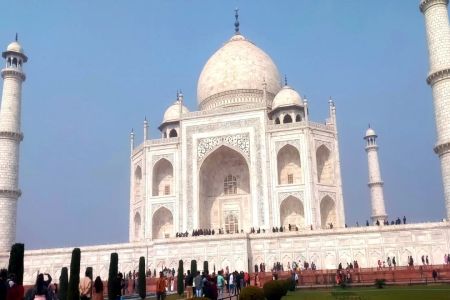How to Visit India’s Holy Cities: A Complete Travel Guide
India is home to a number of sacred cities, each offering a unique spiritual experience. These holy cities attract thousands of pilgrims and travelers from around the world who seek peace, enlightenment, and cultural immersion. In this guide, we will explore the best holy cities in India and provide practical tips on how to visit them, including must-see sights, local traditions, and unique experiences that will make your trip unforgettable.
1. Varanasi: The Spiritual Heart of India
Varanasi, also known as Benares, is one of the world’s oldest continuously inhabited cities and is considered the holiest city in India. Situated on the banks of the sacred Ganges River, Varanasi is a city where life and death coexist. Pilgrims come to Varanasi to take a ritual dip in the Ganges, which is believed to cleanse sins and grant moksha, liberation from the cycle of rebirth.
Visitors can witness the mesmerizing Ganga Aarti ceremony at Dashashwamedh Ghat, where priests perform a sacred fire ritual at sunset. A boat ride along the Ganges offers a peaceful view of the ghats and temples that line the river. Varanasi is also home to some of the most revered temples in India, including Kashi Vishwanath Temple, dedicated to Lord Shiva.
Tip: Stay at a riverside guesthouse to soak in the spiritual atmosphere and watch the sunrise over the Ganges.
2. Rishikesh: The Gateway to the Himalayas
Known as the "Yoga Capital of the World," Rishikesh is located in the foothills of the Himalayas and is a major center for spiritual seekers and yoga enthusiasts. The city is famous for its serene atmosphere, ashrams, and meditation centers. It is also a gateway for those embarking on a pilgrimage to the sacred Char Dham destinations in Uttarakhand.
Rishikesh is home to the iconic Lakshman Jhula, a suspension bridge across the Ganges, which offers panoramic views of the surrounding hills and temples. Don’t miss attending the Ganga Aarti at Triveni Ghat, a peaceful evening ceremony that celebrates the river's sacredness.
Tip: Take part in a yoga retreat or attend a meditation session to truly immerse yourself in Rishikesh’s spiritual energy.
3. Amritsar: The Golden Temple
Amritsar, located in the state of Punjab, is the spiritual center for Sikhs around the world and is home to the Golden Temple, one of the most stunning and revered sites in India. The Golden Temple, also known as Harmandir Sahib, is a symbol of peace, humility, and spirituality. Pilgrims and tourists alike visit the temple to bathe in the holy waters and to offer prayers.
Beyond the Golden Temple, Amritsar is also known for the historical Jallianwala Bagh Memorial, where a tragic massacre occurred during British rule. Visitors can learn about India’s history and the struggle for independence while exploring the city's rich culture.
Tip: Be sure to participate in the langar, a community meal served to all visitors free of charge, to experience the spirit of selflessness and service.
4. Pushkar: A Unique Pilgrimage Experience
Pushkar, located in Rajasthan, is a small yet significant holy town known for its sacred lake and vibrant atmosphere. The town is home to the only Brahma Temple in the world and is a key pilgrimage destination for Hindus. Pilgrims visit Pushkar to bathe in the holy waters of Pushkar Lake and offer prayers at the Brahma Temple.
The Pushkar Camel Fair, held annually, is one of the most unique cultural events in India, attracting thousands of visitors who come to witness the vibrant market, camel races, and traditional Rajasthani performances.
Tip: Plan your visit during the Pushkar Camel Fair to experience the rich culture and lively festivities.
5. Practical Tips for Visiting India’s Holy Cities
Traveling to India’s holy cities requires some preparation to ensure a smooth and respectful experience. Here are a few tips to help you make the most of your trip:
- Respect Local Customs: India’s holy cities are deeply spiritual, so it’s important to be mindful of local customs and dress codes. Women should dress modestly, especially when visiting temples and sacred sites.
- Plan Ahead: Many of these cities can get crowded during religious festivals or pilgrimage seasons. It’s advisable to book accommodation and transportation in advance.
- Stay Hydrated and Safe: India’s holy cities can be quite hot, so make sure to carry water and wear sunscreen. It’s also important to stay cautious about food and water safety.
- Engage with Locals: The local communities in these cities are often welcoming, and engaging with them can provide deeper insights into the culture and spiritual practices.











